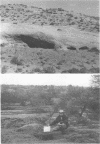Abstract
Outbreaks of coccidioidomycosis and isolation of Coccidioides immitis have been reported from Amerindian middens. This study was undertaken to determine the most important ecological component(s) for the occurrence of C. immitis at archeological sites. Soils from 10 former Indian villages with no prior history of coccidioidal infection were collected and cultured. The physicochemical properties of the midden soils were compared with nonmidden soils and positive soils. The following theories for the sporadic distribution of the pathogen in the soil of the Lower Sonoran Life Zone were considered: (i) the Larrea tridentata (creosote bush) association, (ii) the preference for saline soils, (iii) isolation near rodent burrows, and (iv) animals as possible agents of dispersal. Results showed that a high percentage of the midden soils contained C. immitis, whereas none of the adjacent, nonmidden soils yielded the fungus. Physicochemical analyses revealed that the dark color and alkaline pH of the midden soils were due to past organic contamination. Repeated isolations were made from soils with low to moderate alkalinity. Alkalinity and sandy texture were consistent features of all soils in this study. However, the lack of any reports of nonsandy infested soils possibly indicates that the sandy texture and alkalinity may be factors in the distribution of this fungus. The organic content, soil parent material, and color were not important in the soil ecology. L. tridentata was not significant in the macroflora at the infested sites surveyed. Samples collected without reference to rodent burrows yielded a high percentage of recoveries. Animals, although not the major natural reservoir, cannot be ignored as possible factors in the ecology of C. immitis.
Full text
PDF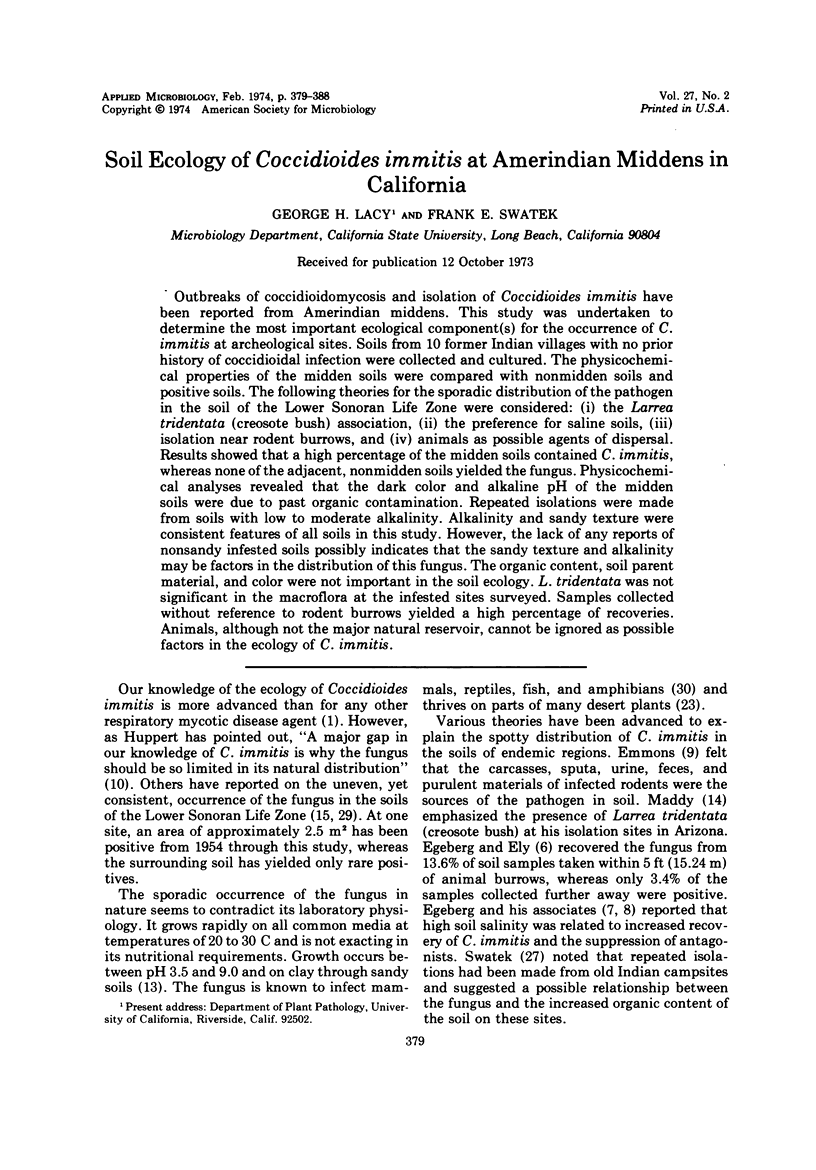
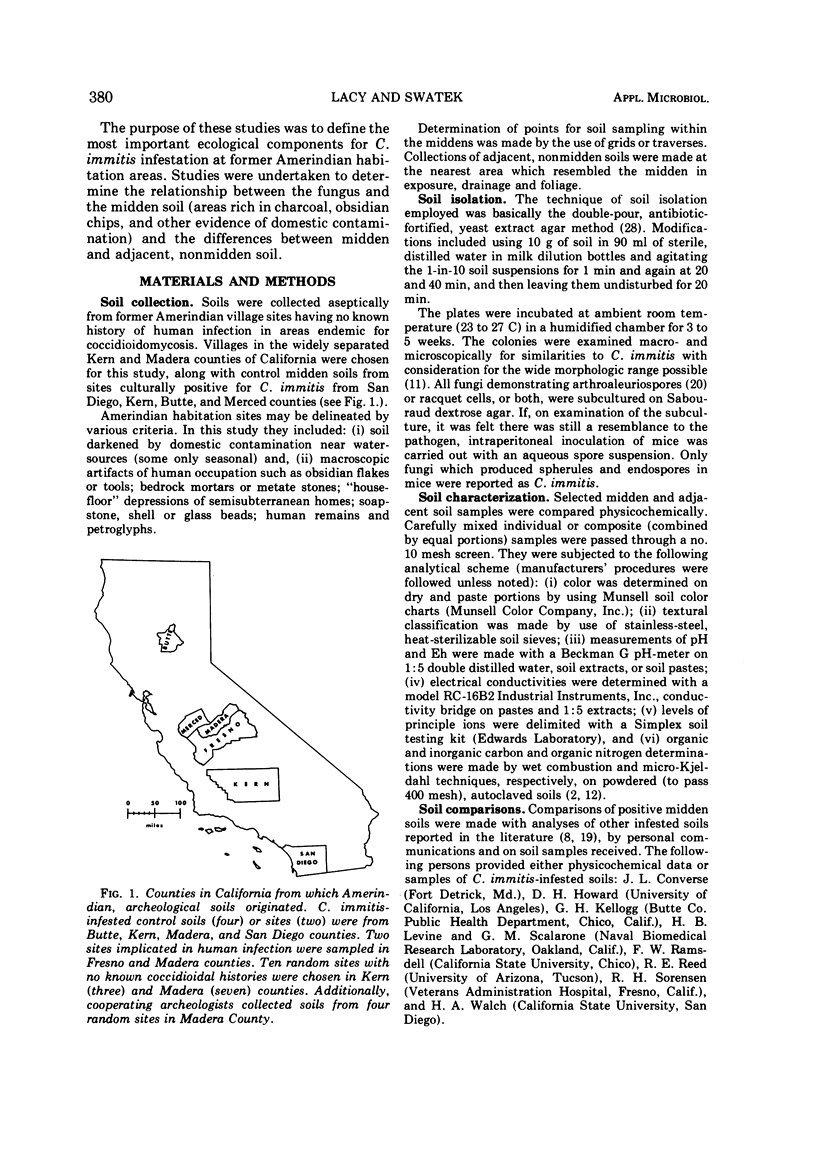
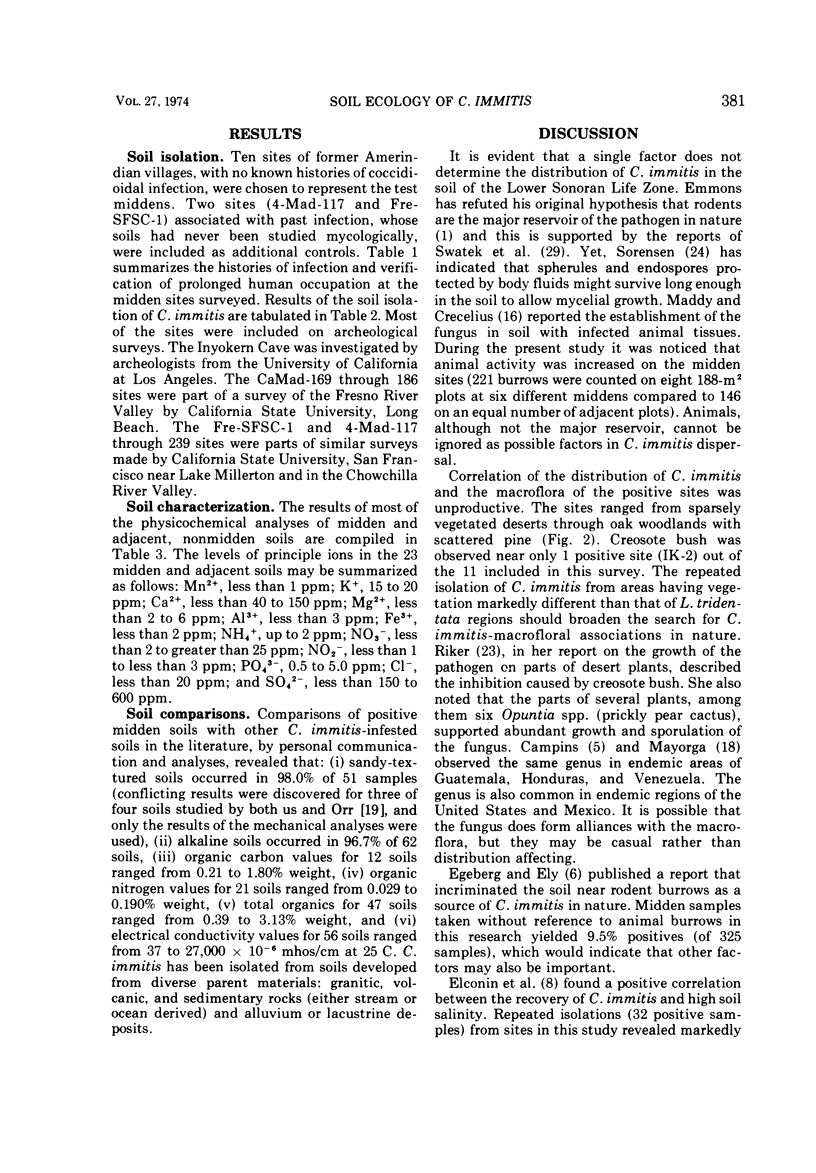
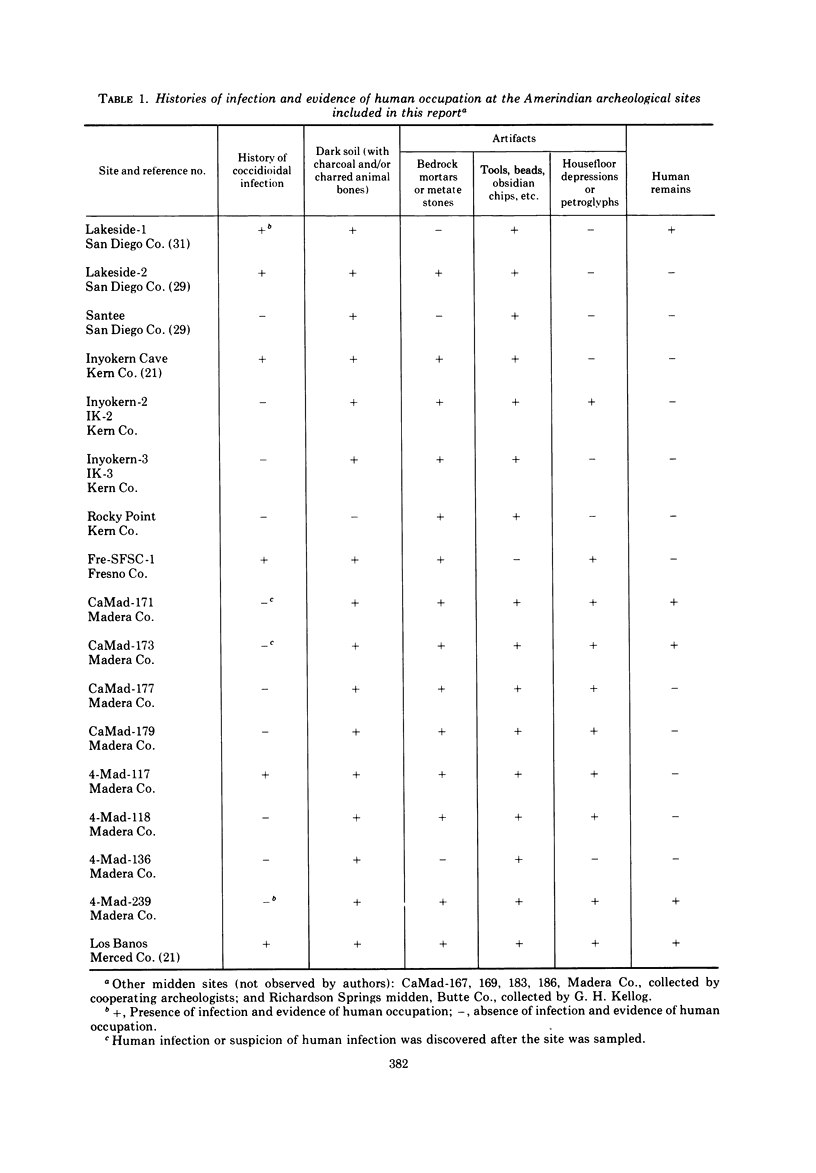
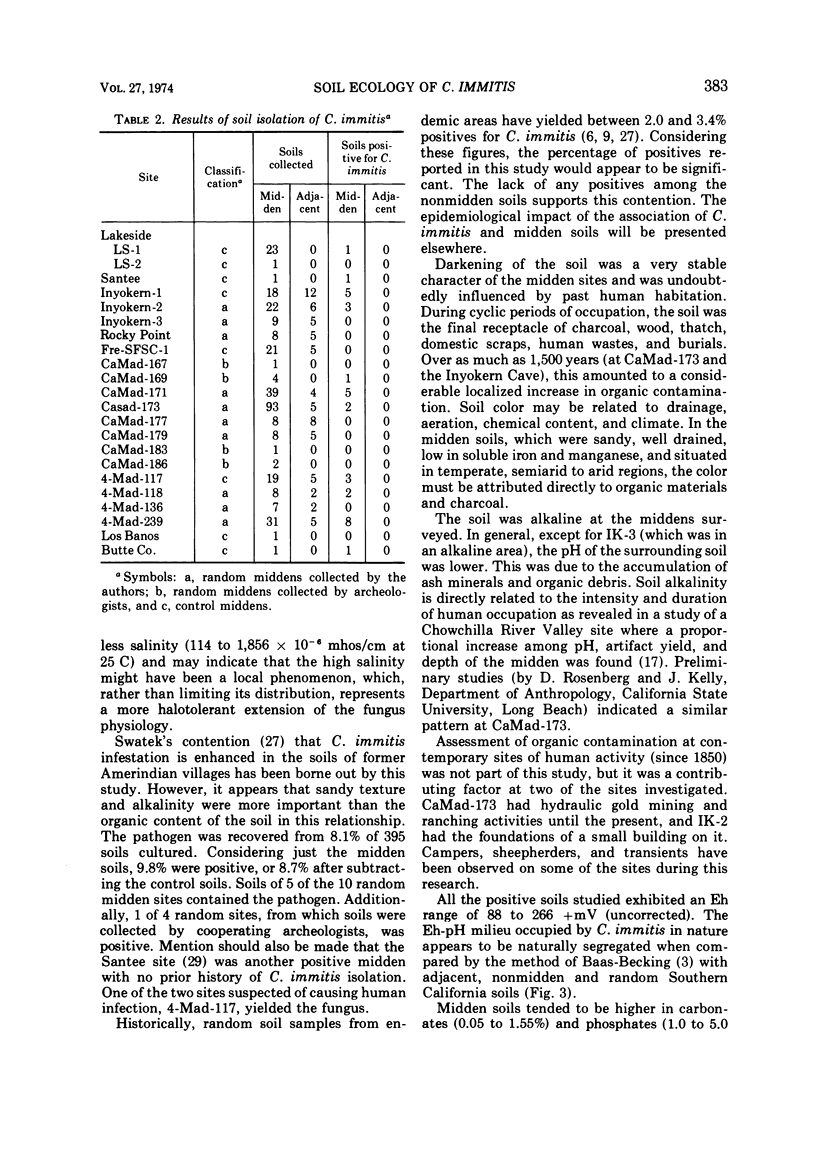
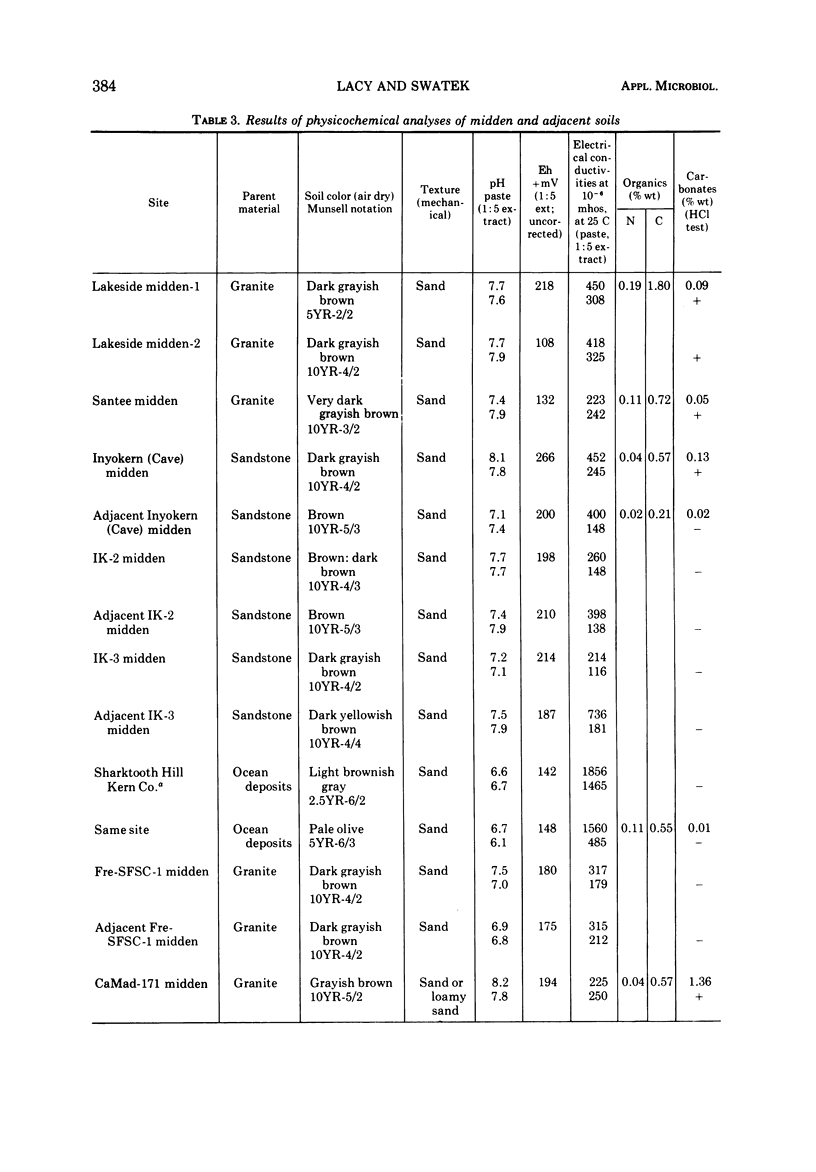
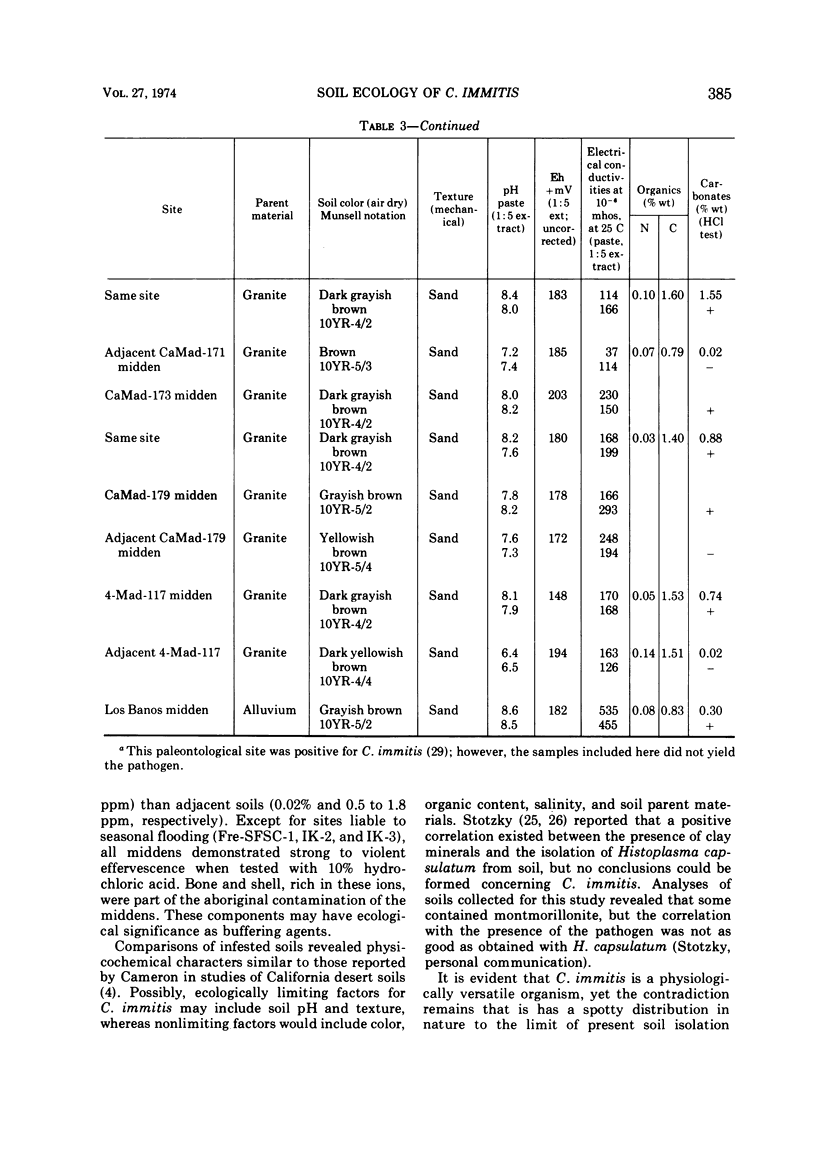
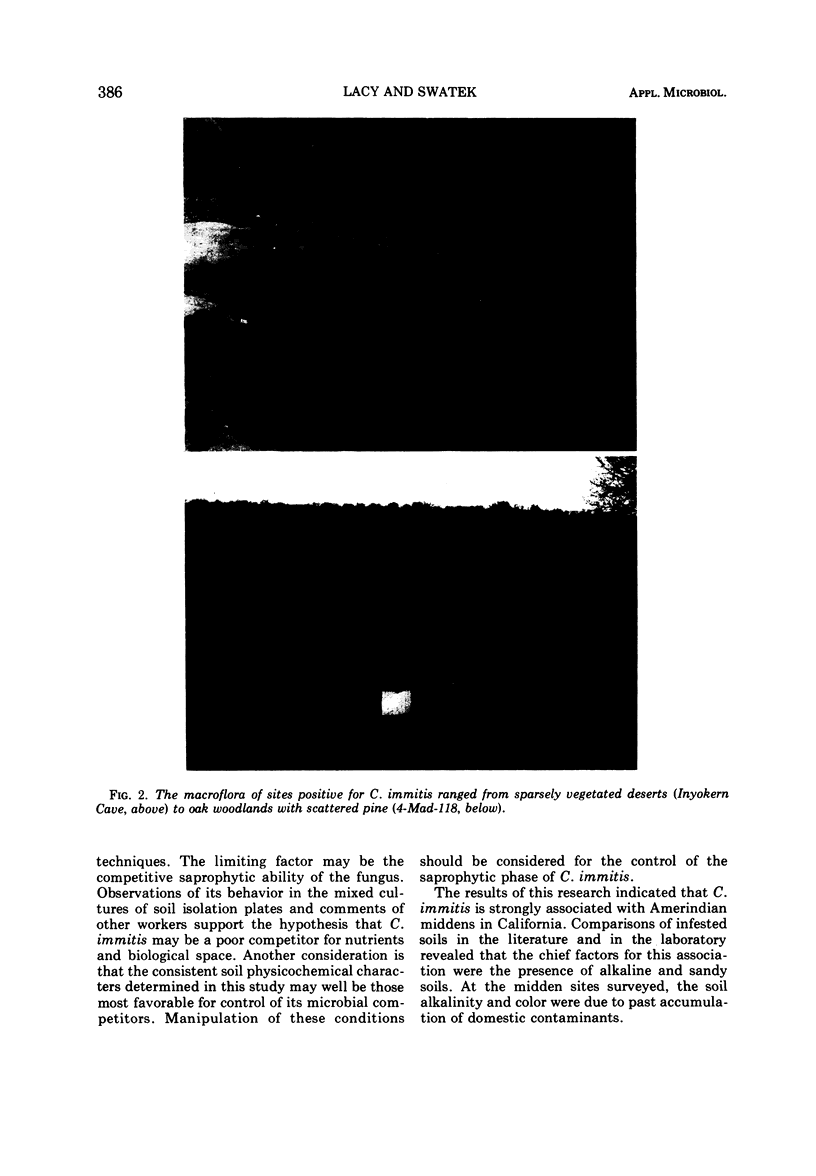
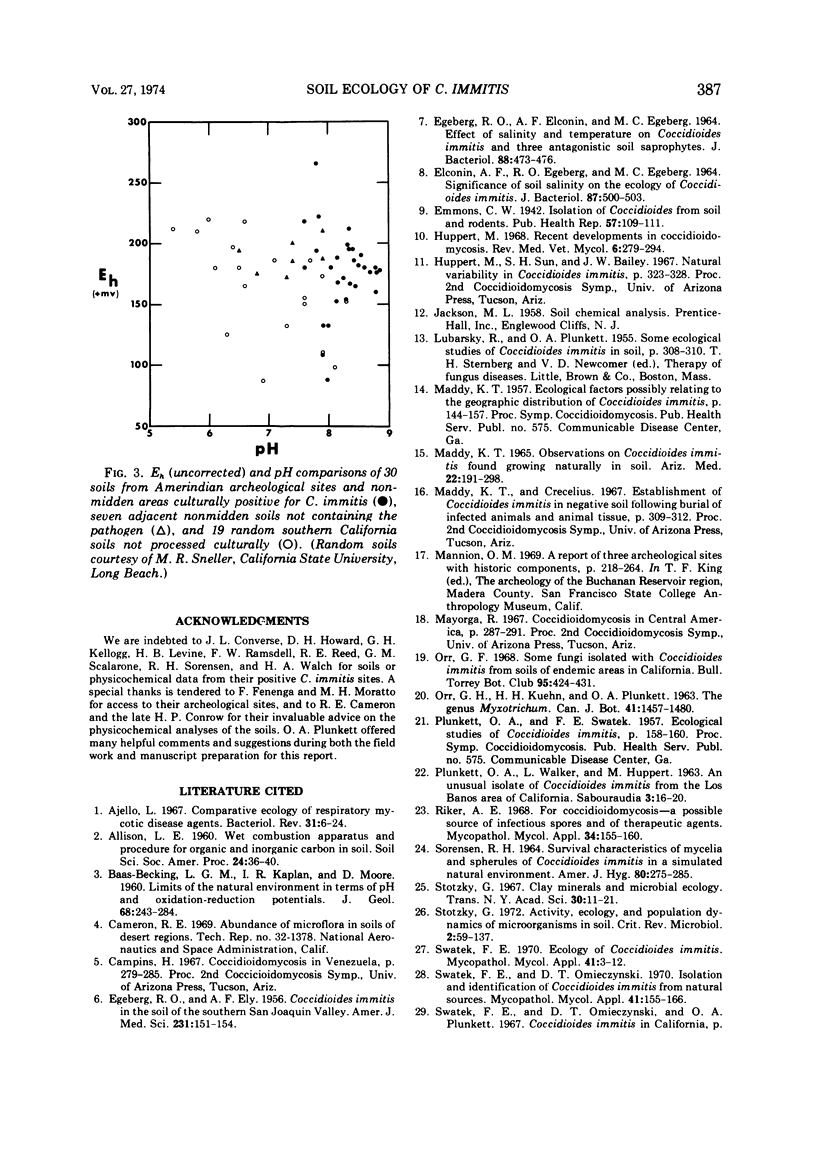
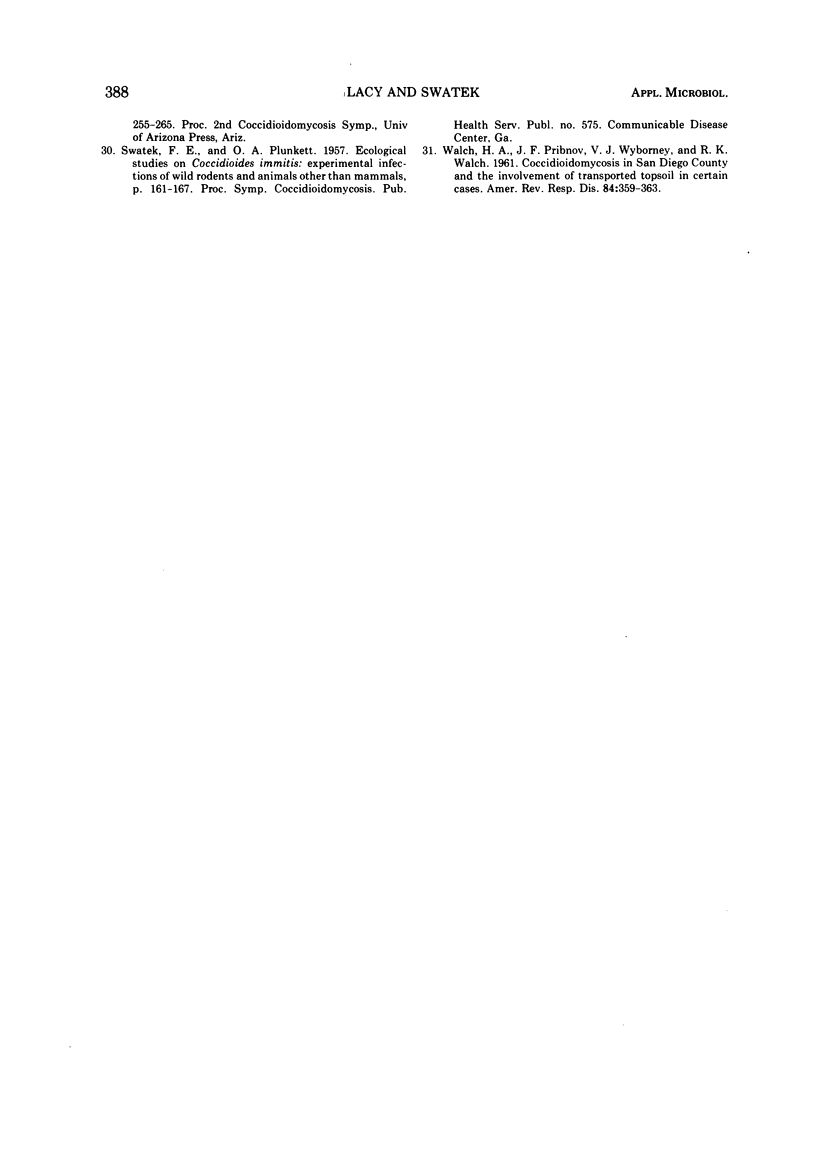
Images in this article
Selected References
These references are in PubMed. This may not be the complete list of references from this article.
- Ajello L. Comparative ecology of respiratory mycotic disease agents. Bacteriol Rev. 1967 Mar;31(1):6–24. doi: 10.1128/br.31.1.6-24.1967. [DOI] [PMC free article] [PubMed] [Google Scholar]
- EGEBERG R. O., ELCONIN A. E., EGEBERG M. C. EFFECT OF SALINITY AND TEMPERATURE ON COCCIDIOIDES IMMITIS AND THREE ANTAGONISTIC SOIL SAPROPHYTES. J Bacteriol. 1964 Aug;88:473–476. doi: 10.1128/jb.88.2.473-476.1964. [DOI] [PMC free article] [PubMed] [Google Scholar]
- EGEBERG R. O., ELY A. F. Coccidioides immitis in the soil of the southern San Joaquin Valley. Am J Med Sci. 1956 Feb;231(2):151–154. [PubMed] [Google Scholar]
- ELCONIN A. F., EGEBERG R. O., EGEBERG M. C. SIGNIFICANCE OF SOIL SALINITY ON THE ECOLOGY OF COCCIDIOIDES IMMITIS. J Bacteriol. 1964 Mar;87:500–503. doi: 10.1128/jb.87.3.500-503.1964. [DOI] [PMC free article] [PubMed] [Google Scholar]
- Plunkett O. A., Walker L., Huppert M. An unusual isolate of Coccidioides immitis from the Los Banos area of California. Sabouraudia. 1963 Oct;3(1):16–20. [PubMed] [Google Scholar]
- Public Health Weekly Reports for JANUARY 23, 1942. Public Health Rep. 1942 Jan 23;57(4):109–148. [PMC free article] [PubMed] [Google Scholar]
- Riker A. E. For coccidioidomycosis--a possible source of infectious spores and of therapeutic agents. Mycopathol Mycol Appl. 1968 Mar 22;34(2):155–160. doi: 10.1007/BF02051424. [DOI] [PubMed] [Google Scholar]
- SORENSEN R. H. SURVIVAL CHARACTERISTICS OF MYCELIA AND SPHERULES OF COCCIDIOIDES IMMITIS IN A SIMULATED NATURAL ENVIRONMENT. Am J Hyg. 1964 Nov;80:275–285. [PubMed] [Google Scholar]
- Stotzky G. Activity, ecology, and population dynamics of microorganisms in soil. CRC Crit Rev Microbiol. 1972 Nov;2(1):59–137. doi: 10.3109/10408417209108383. [DOI] [PubMed] [Google Scholar]
- Stotzky G. Clay minerals and microbial ecology. Trans N Y Acad Sci. 1967 Nov;30(1):11–21. doi: 10.1111/j.2164-0947.1967.tb02449.x. [DOI] [PubMed] [Google Scholar]
- Swatek F. E. Ecology of Coccidioides immitis. Mycopathol Mycol Appl. 1970;41(1):3–12. doi: 10.1007/BF02051479. [DOI] [PubMed] [Google Scholar]
- Swatek F. E., Omieczynski D. T. Isolation and identificationof coccidioides immitis from natural sources. Mycopathol Mycol Appl. 1970;41(1):155–166. doi: 10.1007/BF02051491. [DOI] [PubMed] [Google Scholar]
- WALCH H. A., PRIBNOW J. F., WYBORNEY V. J., WALCH R. K. Coccidioidomycosis in San Diego County and the involvement of transported topsoil in certain cases. Am Rev Respir Dis. 1961 Sep;84:359–363. doi: 10.1164/arrd.1961.84.3.359. [DOI] [PubMed] [Google Scholar]



